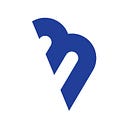Type Design: Knowledge, Creativity and Desire
An Interview with French Type Designer Benoît Bodhuin
Benoît Bodhuin is a visual researcher and type designer from Nantes, France. He is known for his geometric forms and for being a progressive creator. I’ve asked him mainly about his work, but he’s also given us some insight into the process of naming a typeface.
How did you get into design and typography?
I don’t know exactly. I was studying Mathematics, and, 3 years later, I was having a degree in graphic design. Math could have pleased me, but not at the age of 20. I needed something in which I could easily express myself more directly.
Whose work inspired/inspires you?
I’m interested in graphic forms, especially those ones that upset habits. Young graphic designers inspire me, but not only them. There are actually a lot of very good designs. However, if there is no formal research, I can be impressed only by the quality or the idea, but not really interested.
How would you describe the typographic and design scene in Nantes and in France?
There are not so many type designers in Nantes, but in France the typographic scene is lively, luxurious, creative and very diverse. The same applies to the design scene as well.
In an article about you, the website It’s Nice That writes that “[h]is portfolio to date proves him to be a progressive designer, so one to keep an eye on for sure”. In what way do you think you’re progressive? Is it a necessity to be always that progressive in order to stay in the game?
It’s not essential to be progressive to make good design, and sometimes it’s essential not to be progressive to make good design. To be progressive is not an indication of more creativity. It is a peculiarity of some designers to have the desire to explore new territory. I am very proud of being described like that by It’s Nice That because it’s my way of being — and my failing.
What advice would you give to recent graduates who are about to start their career?
I could give them the advice that doesn’t apply to me so much: Take the time to observe existing typefaces and find good books.
Do you think one must be born to become a type designer or one can acquire the knowledge and learn the skills needed to do this kind of work?
Many people might be able to. Type design requests the same competence that graphic design that is knowledge, creativity and a lot of desire. My engine is the desire to discover and create — like in many professions.
What is your philosophy of life?
I have to think about it, but for now it’s enjoying what comes.
Are you a planner or more of a spontaneous person?
I haven’t got any of these two useful qualities, but slightly a planner perhaps.
What can’t you live without?
I’m addicted to many things such as people, especially my children, and the Internet, etc.
Geometry seems to have a crucial role in your work. Why is that?
It goes back to my math studies. In addition to that, it is an effective way to bring rationality into a discipline that might seem complicated at first. It is also an efficient way graphically speaking: the eye is drawn to the regular shapes. In my work, there are reactions to geometry and sometimes to good associations with more fluid forms as in this poster where you must try to read DREAM.
Please tell us about the process of designing a typeface.
It is a piece of research. First, answering a want or a command: thinking and approximate drawings (on computer or paper). It helps me create the base and some emblematic letters. Then I can start designing the type by drawing the letters as well as drawing words and short texts. When the rendering is done, I can finalize it: creating other signs, improving some drawings, and adjusting the kerning.
What is the most difficult part of the process?
To be patient.
Where exactly do you find ideas for a typeface?
I don’t need to look for ideas because each and every type I draw gives me new cravings, frustrations, or questions. Sometimes I do look for challenges, though.
How do you name your typefaces?
If it is commissioned, the name is linked to the client (S-L is Saint-Luc, Kiblind Magazine). The Zigzag was called Vivat (customer name) and had four styles including Zig and Zag (now Opentype function). Side A is drawn for electronic music, Mineral answers to the design of letters, Pipo is Pipo because of its sinuous aspect, and I’ve named another one Marianne because it is a tricolour revolt font. Sometimes these names appear during the creative process. At other times, I think about it at the very end of it. It can be torture, like in the case of Pipo. That one didn’t come naturally to me.
What kind of task do you enjoy doing besides type design?
Cooking for my family, drinking wine with friends, reading, cinema, and sleeping.
What are you currently working on?
New (serif) typefaces.
What are your plans?
As I’ve said before, I’m not a planner, but I consider leaving the field of typography to finally have the chance to become rich. :)
Originally published at //hypeandhyper.com/en/betutervezes-tudas-kreativitas-es-vagy/.
